REVIEW: Marvel vs. Capcom Fighting Collection Contains the Secrets to Immortality
It contains Marvel games by Capcom, too
Marvel vs. Capcom dies and revives about as often as the superheroes it stars. At this point, it’s safe to say that this series is immortal. While many would pay untold fortunes to discover the secrets to everlasting life, it turns out that Capcom sells them for about $50. You see, Marvel vs. Capcom Fighting Collection: Arcade Classics not only contains a lot of words in its title, it also contains the secret to immortality.
Comic books and video games helped shape the person I am today, and I’m sure not alone in that. Seeing these worlds collide in any form was a life-changing event as a child. However, the power of Marvel vs. Capcom lies less in the fact that the crossover exists and more in how it executes on the premise.Comics and games differ in many ways, but Marvel vs. Capcom brings them together in a way that highlights why they work together so well. The unique traits of this tag team are the keys to its longevity.
Like any quality example of serialized storytelling, Marvel vs. Capcom didn’t come out of nowhere. The story of Marvel vs. Capcom is one of subtle buildup and foreshadowing, establishing the individual components of this collaboration until it combines them all into the definitive classics we know today. This release collects seven games in total each with a spot in this gradual escalation. That being the case, I’ll take you through this collection chronologically, highlighting some Infinity Gems of wisdom that power Marvel vs. Capcom’s everlasting nature.
Issue #1 - Open to Interpretation (Gallery, The Punisher)
Comic book characters tend to be open to interpretation. Decades upon decades of neverending stories means that the creative teams behind the books shift often and dramatically. While each hero may retain some core traits, there’s no guarantee that the Spider-Man you read about one month will be the same one you read about the next. This is one of those love-it-or-hate-it quirks of mainstream comics. I know some would prefer the more consistent vision you find in manga or at least a more coherent effort to keep continuity in check. Comic books instead treat consistent character arcs (and body proportions) as suggestions rather than rules.
Inconsistency has its advantages. Whether it’s Steve Ditko, John Romita (Sr. or Jr.!), or Mark Bagley, every artist who works on Spider-Man brings a distinct look to the character that adds new dimensions to him. Longtime fans may have a favorite look or writing style, but in truth the Spider-Man in our minds is a composite of the talents of many different writers and artists. Every new interpretation contributes to the larger collective understanding of who Spider-Man is. By filtering comic book characters through so many perspectives, they end up becoming richer and more relatable than any one perspective could offer.
Capcom’s creatives deserve a seat amongst the pantheon of definitive Marvel artists in my book. Whether you read comics or not, their interpretations helped define comic book characters to anyone who’s ever seen these games in motion. From the promotional art by legends like Bengus and Kinu Nishimura to the in-game sprite work, Capcom’s artists gave the exaggerated stylings of 90s comics a sleekness and style characteristic of their other arcade titles. These renditions treated the original designs with reverence while injecting them with an energy that makes each character feel like they jumped straight out of the comic book page, bringing Marvel characters to life in a way that not even the cartoons could compete with.
This Fighting Collection allows you to admire their craftsmanship up close with a Gallery mode full of illustrations. While inclusions like this are standard in most Capcom collections now, the art design plays such a vital role in the appeal of this set of games that I can’t help but bring it up anyway. All of the promo art is great, but the true highlight for me was a look into some of the design documents for creating different attacks for each character. Moves like Spider-Man’s Maximum Spider make so much sense when seen laid out in doodles – it’s a true realization of the many comic book panels where he’s bouncing around his enemies.
Visuals are just one component of translating comic book characters into the video game medium itself – there’s also the game part! The Punisher appropriately took the first shot, combining the trigger-happy world of the vigilante crime fighter into a side-scrolling beat-em-up. It interprets Frank Castle’s penchant for violence in a similar fashion to the art: reminiscent of what The Punisher is about (killing bad guys) while also taking some interesting creative liberties (like dedicating a section to shooting Street Fighter II bonus stage barrels).
The Punisher expands the basic beat-em-up formula with an emphasis on weaponry. Various sections throughout the game will prompt Punisher to pull out a pistol to take out enemies at long range. This mechanic creates interesting scenarios where the player needs to manage positioning and crowd control from a different perspective than the otherwise close quarters these kinds of games specialize in.
However, The Punisher doesn’t stop there. He’ll use anything and everything at his disposal, from grenades to flamethrowers to medieval battle axes. I’m not sure that Frank would resort to tossing boomerangs or swinging around an impractically large hammer in the comics, but I’m willing to accept some liberties in the name of fun. The wide variety of tools at Frank’s disposal gives the game a sense of strategy and surprise that few beat-em-ups take advantage of.
Beyond the main hook, The Punisher relies on strong fundamentals. It looks and feels great to hit bad guys. The dash move, dodge roll, grenades, and heavy damage techniques add depth to the base gameplay with or without weaponry. A hectic and haunting soundtrack from Yoko Shimomura (of Kingdom Hearts, Parasite Eve, and Mario RPG fame) perfectly captures the desperation of the Punisher’s fight. For a first time collaboration between Marvel and Capcom, this interpretation of the comic book character easily hits its mark. Of course, it wouldn’t be long until they had more targets in their sights.
Issue #2 - The Best Fit (X-Men: Children of the Atom, Marvel Super Heroes, Porting)
Side-scrolling beat-em-ups seem to be the go-to video game interpretation for comic book superheroes in the 90s. The concept fits well enough: what better way to represent the nature of endless, serialized fights against bad guys than a scrolling screen that consistently serves up more bad guys to fight? Yet while the concept fits plenty of comic books nicely, I’d argue that it’s not necessarily the best fit.
X-Men: Children of the Atom and Marvel Super Heroes prove that a pivot to fighting games may be the superior choice depending on the concept. These games embrace the 90s era of Marvel wholeheartedly. Children of the Atom brings the X-Men iteration that began with artist Jim Lee to video games while loosely adapting the “Fatal Attractions” storyline. Marvel Super Heroes widens the superhero net in an adaptation of the “Infinity Gauntlet” event. This may boil down to personal opinion (like everything else I’ve ever written), but to me 90s comics are all about aesthetics: cool imagery, dynamic posing, and action. For many books of this time period, the writing almost hinders the experience more than it helps.
Fighting games emphasize and exaggerate aesthetics in the same way 90s comics do. The characters are big, they’re expressive, and they have a ton of different moves. A wider arsenal allows more opportunities for characters to express their personality and strike cool poses. Better still: they’re all action and any semblance of a plot can easily be ignored. Dialogue rests comfortably between fights as brief little quips or ending sequences.
Further fitting the over-the-top nature of this era of Marvel, these games also push the fighting mechanics into a wild direction. Both games work off the base of Darkstalkers (which in turn works off the base of Street Fighter II) meaning that they’re full of movement options like super jumps, dashes, and air blocking. Hyper moves, launchers, and aerial raves further energize the action. In the greater context of what Marvel vs. Capcom would become, these games may seem quaint or restrained, but compared to the origin point of Street Fighter they’re practically feral. Regardless of where things went, these games look great, play great, and efficiently adapt the source material they draw from.
In a way, the appeal of these games lies in their straightforward nature. They focus on a specific era of comics without crossover complications (excluding a secret appearance of Akuma in COTA). I especially enjoy how MSH leans into the Infinity Gauntlet setting by introducing the Infinity Gems as a game mechanic. Cool ideas like that give the game a distinct flair. When lining up a bunch of games together in a collection like this, it can be easy to look at them like they’re some kind of linear progression, with newer games making the older entries outdated. However, the care and attention that went into making them standalone adaptations of a specific time and place in Marvel history makes each game worth returning to on its own merits.
Speaking of time and place, you may be wondering: is Marvel vs. Capcom Blah Blah Blah Collection the best fit for playing these games? As always when talking about HD ports of old games, it depends on what you’re willing to put up with. Modern consoles inherently come with the caveat of increased input lag and potential for strange porting quirks. A lot of the appeal for me tends to be more on the convenience side of things – I’m not planning to win any obscure EVO side tournaments. To their credit, however, it seems as though Capcom has done an admirable job in addressing input lag to the most reasonable extent possible and even went to the trouble of patching in a previously missing bug. Definitiveness may depend on your perspective, but between these efforts and some extras I’ll get into shortly, this collection seems like the best fit possible for these games outside of tracking down a bunch of old arcade cabinets.
Issue #3 - Perfect Partners (X-Men vs. Street Fighter, Marvel Super Heroes vs. Street Fighter, Extras)
Marvel and Capcom clearly work well together, so after three games they decided to make that partnership much more literal. As was foreshadowed back in Issue #2 with the first appearance of Akuma in COTA, X-Men vs. Street Fighter and Marvel Super Heroes vs.Street Fighter finally bring the disparate worlds of comic books and video games together for an all-out brawl. These games not only emphasize the importance of partnership in general, they emphasize why these companies may in fact be the perfect partners.
At their core, Marvel characters and Capcom characters actually share a lot in common. Both stables of characters feature strong, distinctive designs. Many of them tend to be their own brand of superheroes, or at least have some form of superpowers. By the necessity of their production process, both Marvel and Capcom carry a sense of malleability that leaves them open to interpretation. Just like the many creative teams behind comic books, different teams of developers tend to be behind individual entries of long running series like Street Fighter. Ryu may look like a martial arts guy, but he’s the kind of martial arts guy that you can easily believe would be able to go anywhere and fight anything.
When the X-Men decide to fight Street Fighters, your brain accepts the premise at face value. Why wouldn’t X-Men be able to fight Street Fighter, you know? I believe that the premise being so easy to accept speaks to an inherent compatibility between these worlds. In both the worlds of Marvel and Capcom, pretty much anything can happen, and these first two titles in the “Vs.” series represent that well.
These games introduce a tag-team aspect to the previously Marvel-only gameplay that transforms the experience into more than just a simple crossover. Tag fighting adds elements of comradery and possibility into the mix. Crafting your own dynamic duo inherently brings some personal ownership to your playstyle that extends beyond simply having a “main” to play as. Suddenly you need to start thinking about how well each character works together, both from a gameplay perspective and perhaps even a character one. I can imagine Spider-Man and Sakura working well together, but would Storm really work with M. Bison? Maybe I’m the only one who thinks about that kind of thing, but if I don’t like the team for whatever reason I’m not going to pick it!
From a gameplay perspective, tag-team fighting allows an already energetic fighting system to reach a whole new level of dynamism. Being able to switch characters in, create devastating combination attacks, and create new layers of defensive options reinvigorates the fighting system with fresh ideas
The collaboration aspect gives this crossover series its heart and soul, and it’s well worth experiencing where it started. All of the usual presentation strengths apply just as strongly in this duo of games as they do anything else in the collection, in this case being how the games choose to present these two worlds coming together. Teaming up Apocalypse and having him turn Akuma into a cyborg in MSH vs. SF always struck as a particularly inspired choice for bringing the worlds together for a final confrontation.
In a way, the collection itself also serves as a perfect partner. If you find yourself wishing to dig deeper into everything these games have to offer, it does plenty to accommodate. From a training mode built into every game, a treasure trove of game settings and display options to futz around with, and easy access to each game’s secret characters, this collection provides just about everything you could want. You can even pick between the English and Japanese versions of each game, which matters if you want to try out MSH vs. SF’s joke character, Norimaro.
Issue #4 - Let’s Go Crazy! (Marvel Vs. Capcom, Marvel Vs. Capcom 2, Online)
While Marvel vs. Capcom (2 especially!) maintains a strong reputation for competitive play, it’s not because it’s some meticulously balanced masterwork. Quite the opposite. Marvel vs. Capcom thrives on its lack of balance. When you place a coin in the original MVC and the lady shouts “let’s go crazy!”, that’s more than a phrase to pump you up. That’s a summary of how these games operate. Deep in its heart, Marvel vs. Capcom works at a high level because these are games where anything can happen.
When considering the greater context that led to them, Marvel vs. Capcom games represent an opening of the floodgates. Now, there are no more limits. Anyone can appear in these games. Anything can happen thanks to their freeform game design. In their own ways, both of these titles push the limits of what it means to be the ultimate crossover.
The original MVC relies on some pretty outrageous ideas. In addition to your tag-team duo, you can also call in additional assist characters randomly selected at the start of each match (unless you know the secret button combos!). The power and use of each assist varies wildly, and I suspect that’s the point. As implemented, the assists add an element of needing to think on your feet and adapt to whatever gets thrown to and at you. While perhaps not ideal for a competitive environment, it is for a crazy crossover battle.
Even crazier than the assists is the duo team attack. At the cost of your entire meter, you can call in both of your characters and control them at one time. This mechanic can be as confusing to control as it is to look at, yet its power is hard to deny. With this mechanic, the strangest of offenses and combos become possible if properly executed.
As wild as the original MVC can be, though, it’s not what people think of when it comes to the true potential of this series. That honor belongs to MVC2, which ups the ante in ways that establish it as the ultimate crazy crossover combination.
Honestly, one look at its massive character select screen alone might give you that impression. MVC2’s staggering 56 character roster is big even by modern standards. Practically everyone from Capcom’s time with Marvel makes an appearance in this game. Call it asset reuse if you want, but it doesn’t change the fact that MVC2 represents a true culmination of the years of work that went into this partnership
Not only does MVC2 give players more toys to play with, however, it also gives them more ways to combine them. MVC2 increases the team size from 2 to 3. Every character now has 3 potential assists rather than one. The amount of options available for team composition immediately overwhelms. I can’t even begin to describe how much time I spent back in the day theorycrafting different teams (that work with my headcanon lore too, obviously) to use. Such a wide-open system suggests a virtually limitless potential to the game that captures the imagination.
Of course, these days ideal team setups like Magneto Storm and Sentinel dominate the competitive side of things. That doesn’t quite tell the full story, though. You may not be winning Evo with lesser teams, but you’re also probably not competing with the most elite players out there in the first place. Even if you are, very few are likely playing at a level that can be totally impenetrable if you happen to be a competent player yourself. The amount of options available can result in strategies that elevate unusual teams or create opportunities for eking out a win. Even weaker teams and characters still have a chance in the right hands, and that potential creates the real magic of Marvel vs. Capcom.
The wild, untamed craziness of their fighting systems and options keeps Marvel vs. Capcom games fun and fresh to play long after players establish tier lists and metas. Even the best-laid plans can go awry and something unexpected may be lurking around the corner. Marvel vs. Capcom expertly combines skill and potential in an addicting way that makes you want to keep throwing the dice and see where everything lands.
And with the magic of modern technology, you can roll the dice with players online as many times as you want. This collection features an impressive suite of online features and rollback netcode to boot. Everything from the search options (you can check individual games for a mass search of all or some of them) to the lobbies to the rematch options just works with no frills or issues to speak of. It’s straight to the point and pretty much exactly what I want out of an online mode. The only real caveat that stands out to me is that there doesn’t seem to be a way to filter out wifi connections, which is potentially deadly on a platform like Switch where wifi connections are pretty bad to begin with.
Everyone will remember Marvel vs. Capcom for different reasons. These various “issues” represent just a few that stand out to me. Everything from the art to the gameplay to the nature of this series as a premise has a special kind of appeal that I can only attempt to convey to you in words. For whatever reasons matter to you, this collection serves as an excellent way to keep this series alive well into the future.


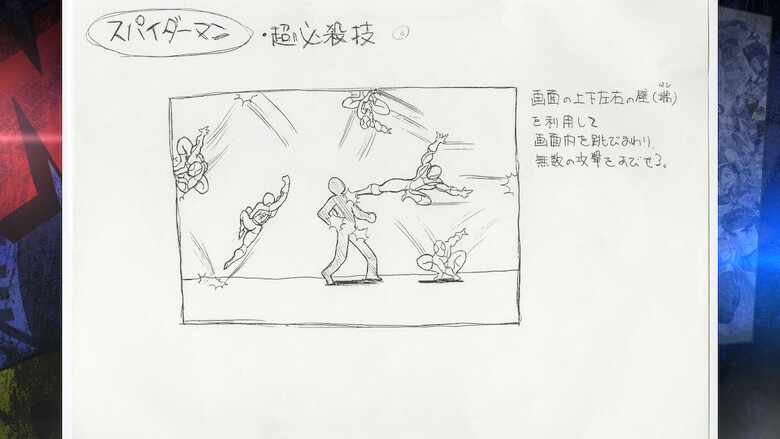
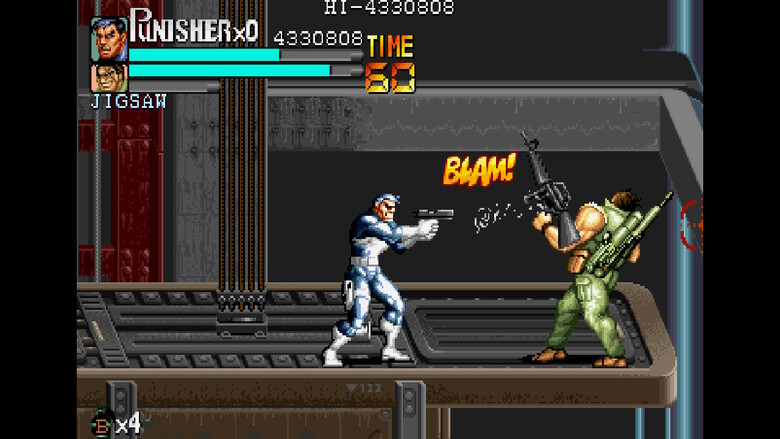





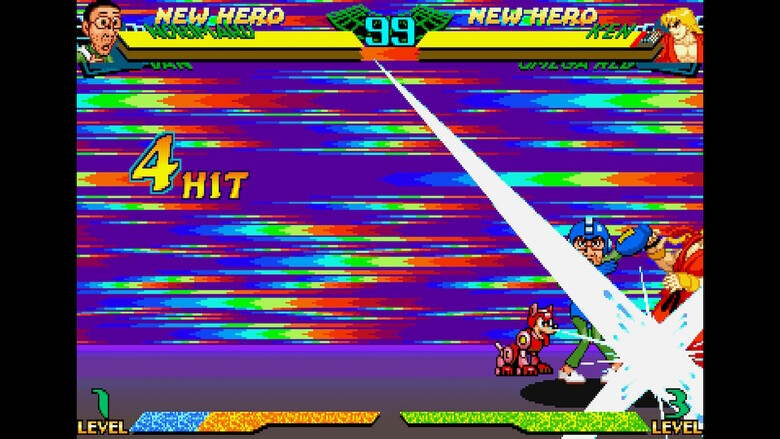

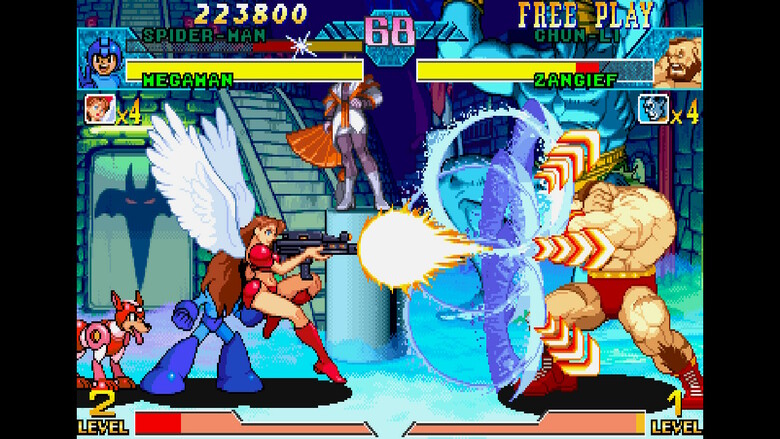

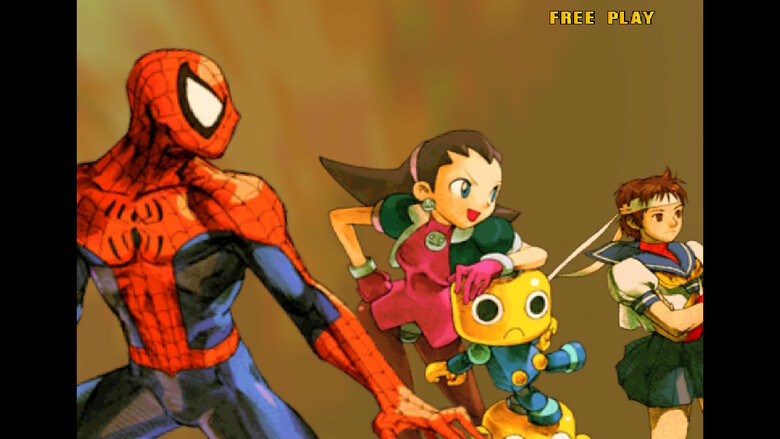
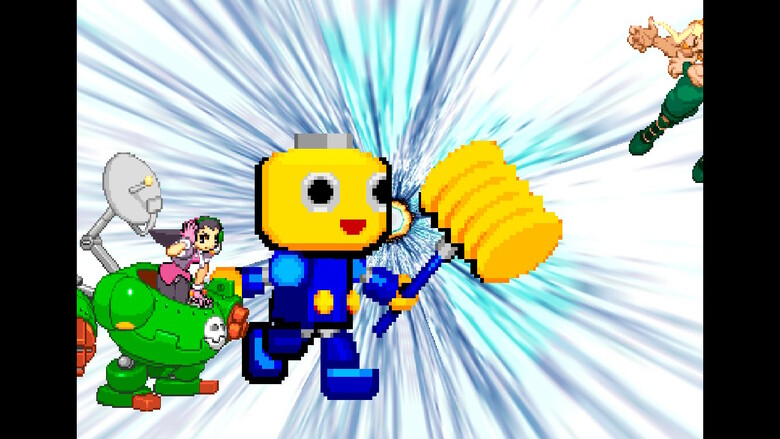

Comments (0)